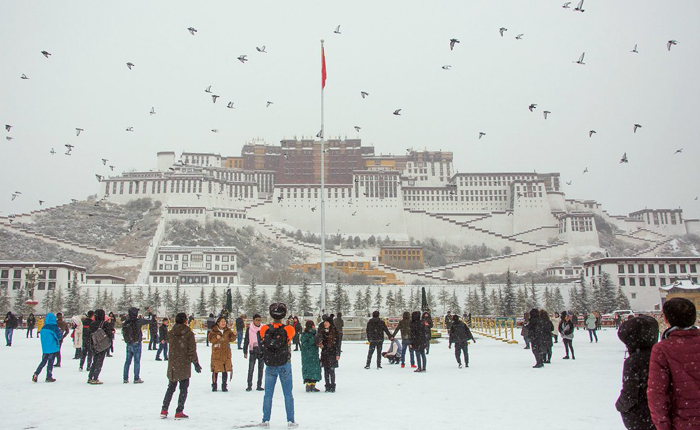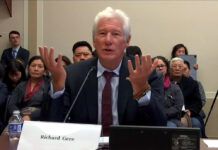(TibetanReview.net, May08’21) – China expects to receive 42 million tourists in occupied Tibet Autonomous Region (TAR) this year and 61 million by 2025, the last of its 14th Five-Year Plan, reported the official chinadaily.cn May 8. China has declared tourism a pillar industry of the region.
Tourism in Tibet for non-Chinese foreigners is severely restricted. They have to obtain an additional, special permit and then must travel in a group, with many parts of TAR being off-limits to them. These restrictions do not apply to Chinese tourists, many of whom ride or pedal their way to TAR.
Citing a recent conference call about the region’s tourism sector, the report said more than 42 million tourists were expected to visit TAR this year, generating a tourism income of 44 billion yuan, an estimated 20 percent year-on-year increase in both.
The report also cited local authorities as saying the TAR will receive 61 million tourist visits and achieve an annual revenue of 64 billion yuan ($10 billion) from tourism by 2025.
This was stated to be part of the region’s drive to boost tourism during China’s 14th Five-Year Plan (2021-25). The report noted that more than 600,000 tourism operators and rural residents were expected to benefit from the industry by 2025.
During China’s 13th Five-Year Plan (2016-20), the region was reported to have received 157 million Chinese and other foreign tourists and earned more than 212.5 billion yuan from tourism, which were 2.3 times and 2.4 times respectively as much as that during the 12th Five-Year Plan (2010-15).
The report cited Wang Songping, Chinese head of the regional tourism development department, as saying that the region’s tourism economic data had exceeded the target of the 13th Five-Year Plan two years ahead of schedule, and that the tourism sector accounted for 33 percent of TAR’s total income.
He has said the region continued to develop more tourism sites in its rural areas. More than 300 countryside tourism sites had been created in rural areas, and 26 townships had become special tourism townships over the past five years.
Mining, solar and hydrological power generations, handicrafts, and Tibetan medicine are some of the other pillar industries of TAR.






